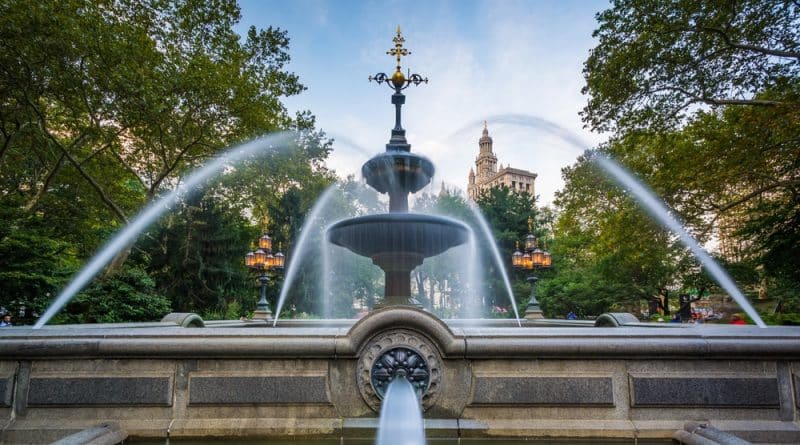
Lower Manhattan is the southern part of the main island of new York city. The first European settlement in this part of the present metropolis was founded by the Dutch in 1626. In the beginning of XX century it was intensively built up, however, this does not mean that the prints of the XIX century, was completely razed to the Big Apple. On the stretch from Battery Park to Madison Square Park you can find a lot of architectural structures that can still show the careful observer, how the city looked a few centuries ago. Not this can be called the purest form of magic city?
We will embark on a short journey through the parks, hotels and haphazardly winding streets and look at them through the eyes of someone living in the XIX century.
1/Castle Clinton National Monument
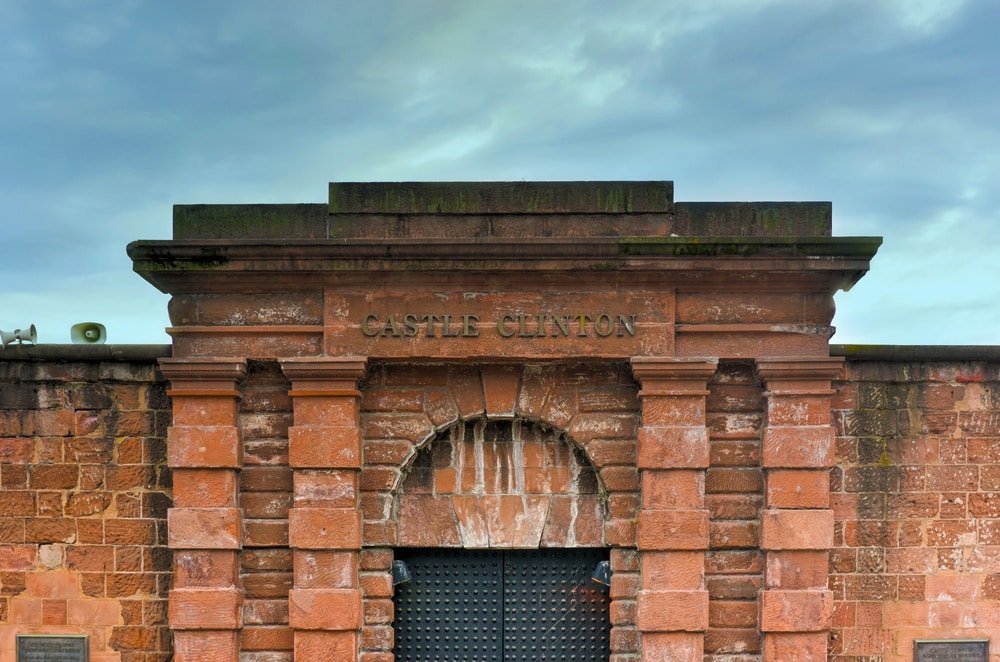 Depositphotos. New York,The facade of Castle Clinton is shown in New York. Castle Clinton, then called Castle Garden, served as the country’s first immigration depot.
Depositphotos. New York,The facade of Castle Clinton is shown in New York. Castle Clinton, then called Castle Garden, served as the country’s first immigration depot.
Battery Park
This national listed building was once the strengthening of the fortificationbuilt for the war of 1812. But the Fort was not able to participate in real battles. In 1823 he was transferred to the city and became a popular attraction. From 1855 to 1890 in the Fort were located the item of reception of immigrants. In 1896, it opened the new York aquarium, who later moved to Coney island. In 1950 castle Clinton was transferred to the Ministry of internal Affairs of the United States and received the status of national monument. In the 1970’s the Fort was restored. As of today, castle Clinton is used as a platform for performing arts and represents an important area of cultural and historical heritage of new York.
2/Bowling Green
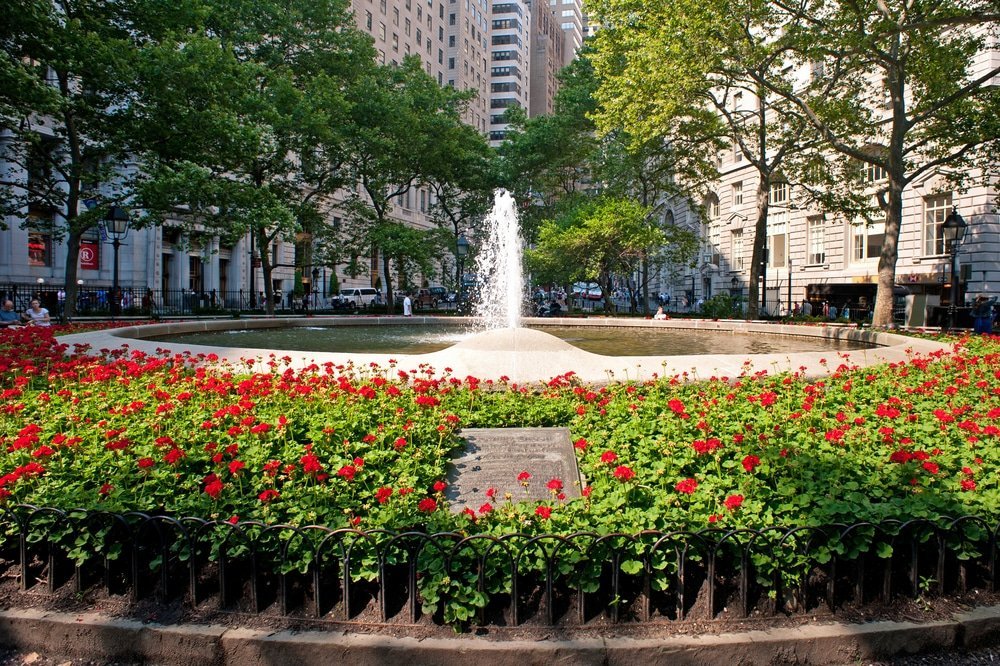 depositphotos
depositphotos
Broadway and Whitehall St
Park Bowling Green bounded by Broadway and Whitehall street. Here once stood a leaden statue of king George III, which at the beginning of the revolution was torn down and turned into bullets. After the War for independence around the Park were built elite residential development. Local residents obtained the right to use the Park at their discretion. Thus, the access other citizens have been greatly limited. However, by the mid-nineteenth century, many inhabitants moved to the North from becoming more and more the business of Lower Manhattan, and their houses were occupied by transport companies. Subsequently, the entire building was demolished. One of the buildings erected in its place, is Building US customs name of Alexander Hamilton.
3/Trinity Church
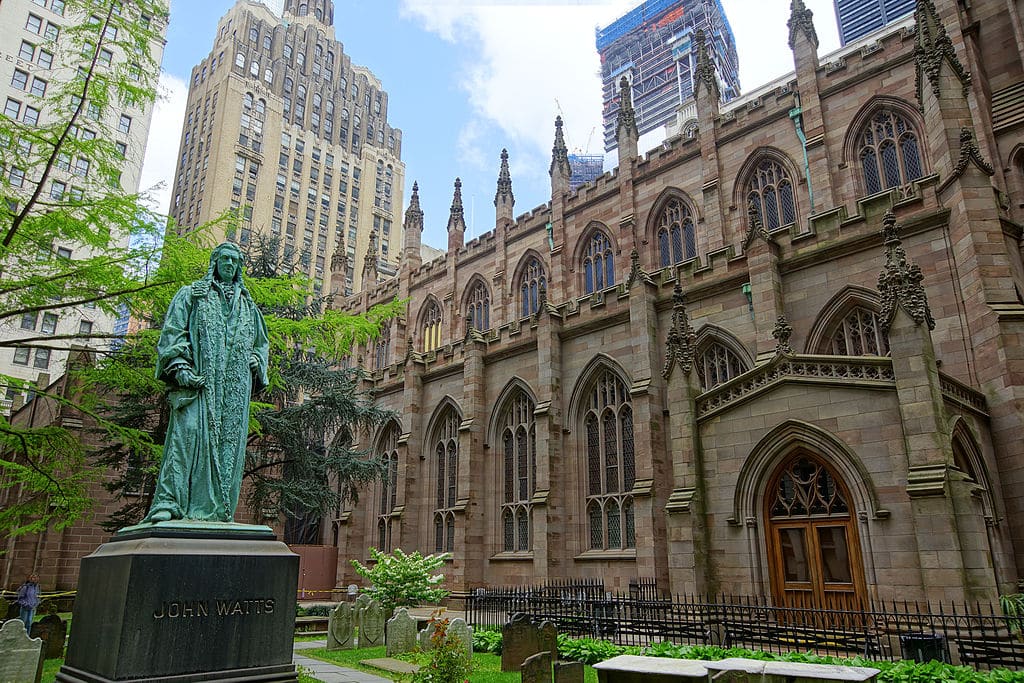 source: wikimedia
source: wikimedia
75 Broadway
The building was built in 1846 by R. Upjohn in the style of Gothic revival. At the time of construction it was the tallest building in new York, with 85-meter spire with a cross. It remained the record for altitude up to 1890, before the construction of the new York world building. It is not surprising that in the nineteenth century a visit to the observation deck at the top of the Church consisted of all city guides in new York.
4/the national memorial Federal Hall
 source: flickr
source: flickr
26 Wall St
The building is Federal Hall, known in the nineteenth century as the Ministry of Finance of the United States was built in 1842 by the architectural firm of Ithiel & Town. It served as a Federal customs house, before the Department moved to another building down the street.
5/Building National City Bank
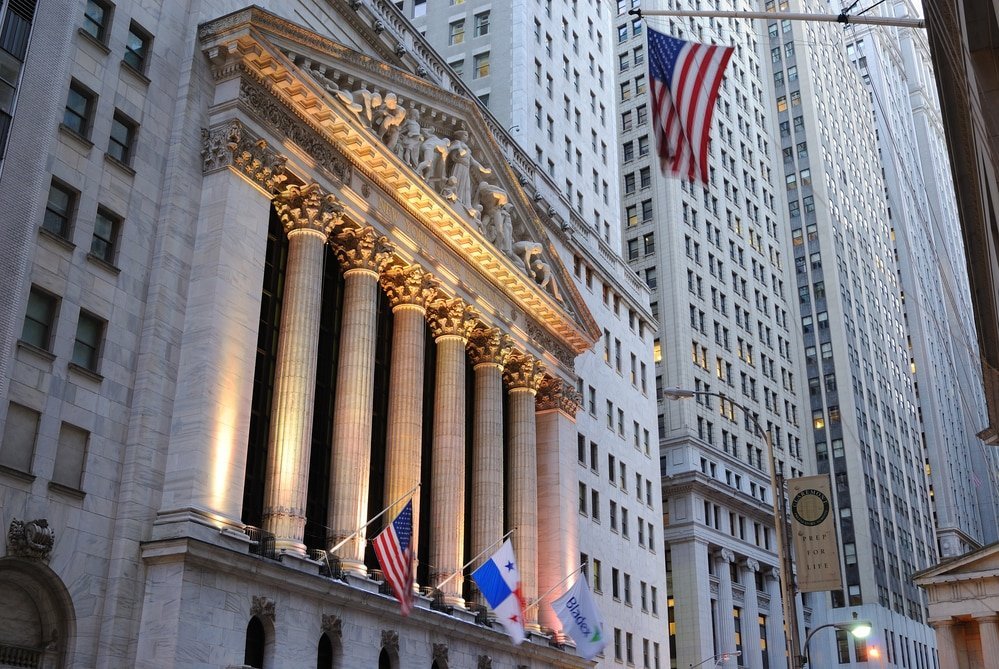 depositphotos. The landmark new york stock exchange in new york city
depositphotos. The landmark new york stock exchange in new york city
55 Wall St
Even in the nineteenth century, wall street was one of the most crowded streets of the city. Which is understandable, because there were major financial institutions of the city, such as the exchange Merchants’ Exchange. It opened in 1827, but in 1835 it was destroyed in the Great fire. The new building was designed by Isaiah Rogers in the Greek revival style.
6/the Chapel of St. Paul
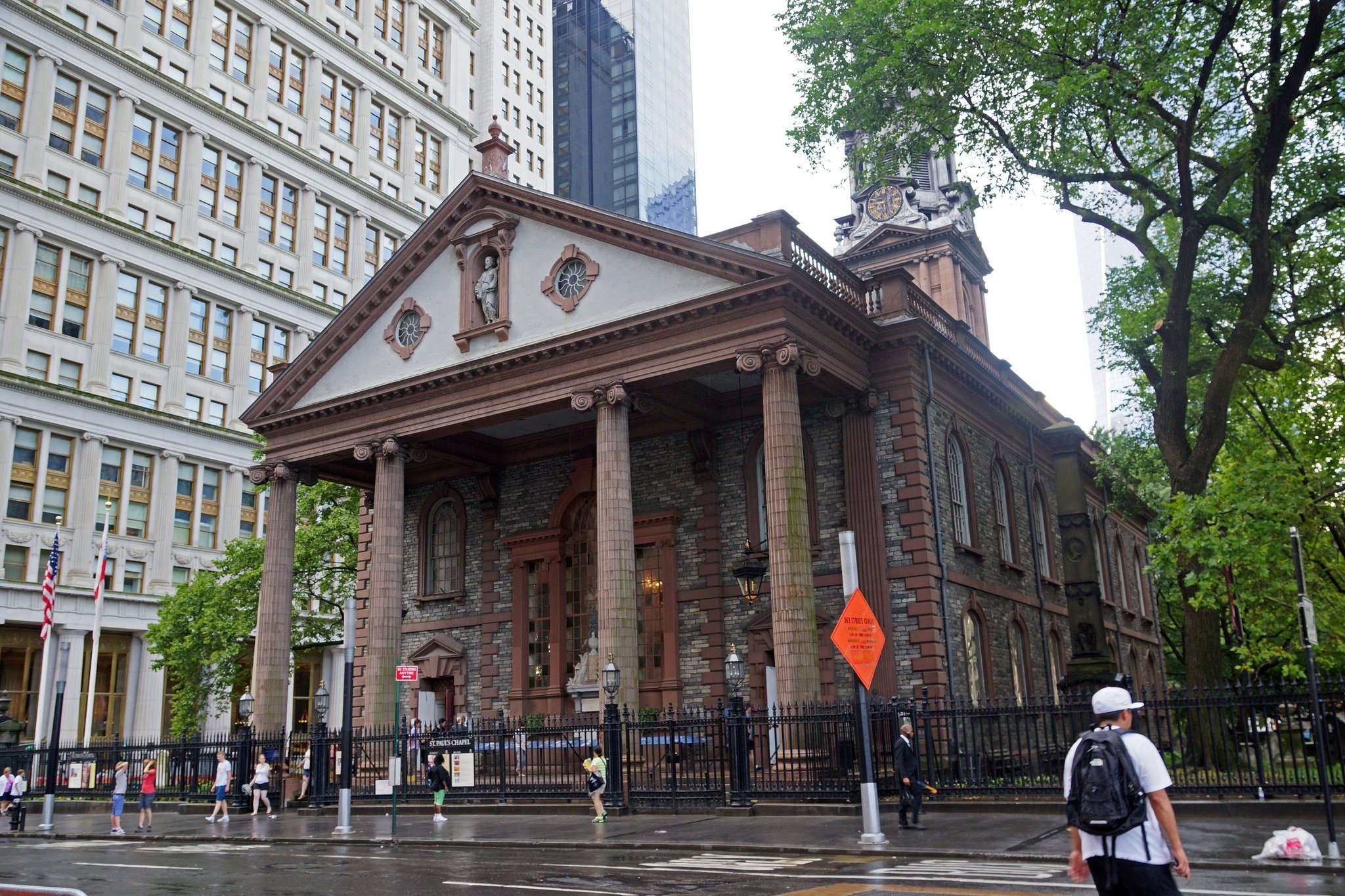 source: flickr
source: flickr
209 Broadway
The chapel of St. Paul was built in 1766 (even in the XVIII century), is fromAmoy oldest surviving Church building in Manhattan.
7/City Hall Park
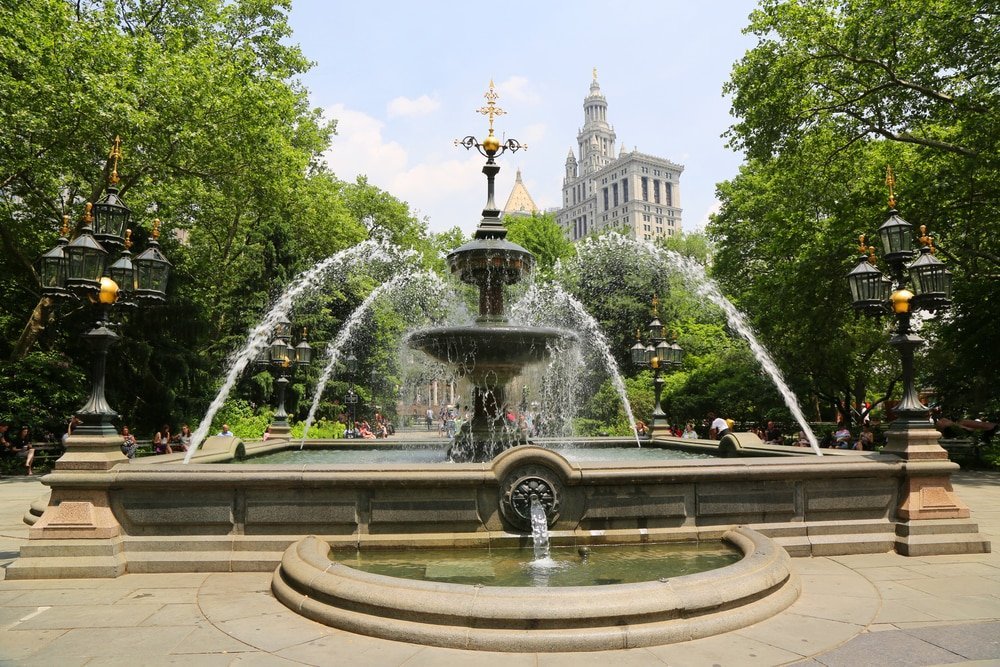 17 Park Row
17 Park Row
Bad reputation of this Park stayed with him for more than a century ago. In 1980-ies it was called a scruffy patch of grass and roots surrounding the Park. The beginning of the decline of the Park can be considered to be 1869, when the lower quadrant was seized for the construction of a new main post office, finished in 1880году.
8/town hall
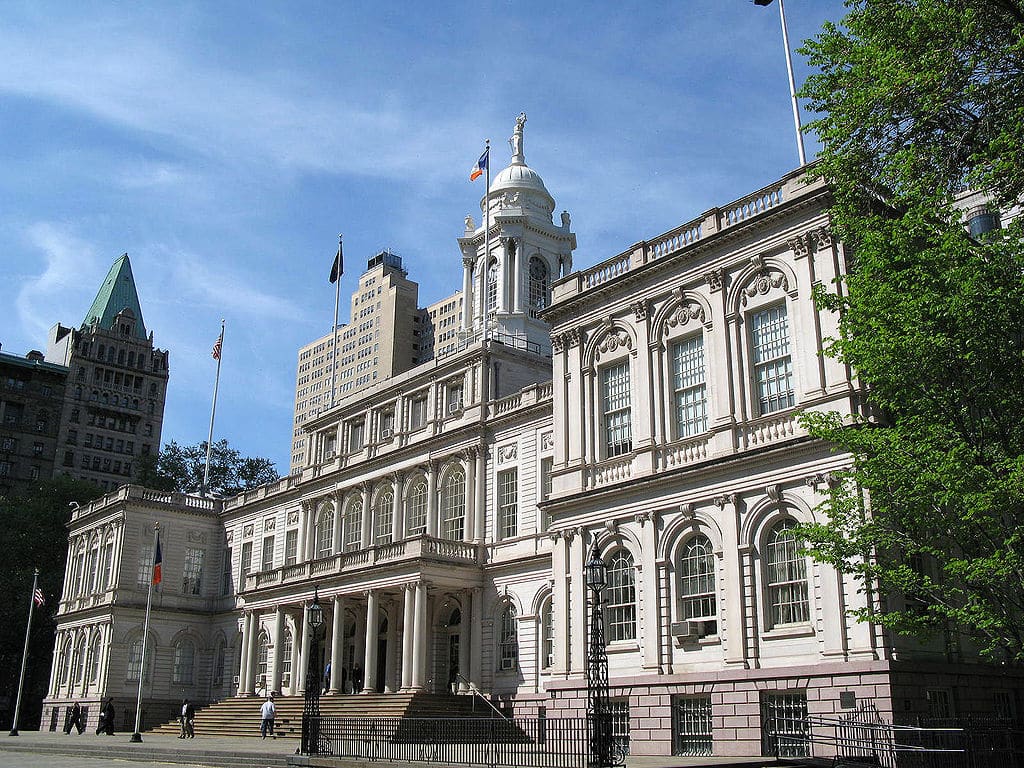 source: wikimedia
source: wikimedia
17 Park Row
City hall, constructed from 1803 to 1810, the year for big money, then was an impressive building, a special pride which is considered the clock in the tower. The original front facade of the town hall was made of Massachusetts marble, and the rear of brownstone. For a century and a half they got worn out, and from 1954-1956 was replaced with Alabama limestone and granite from Missouri.
9/Widow court
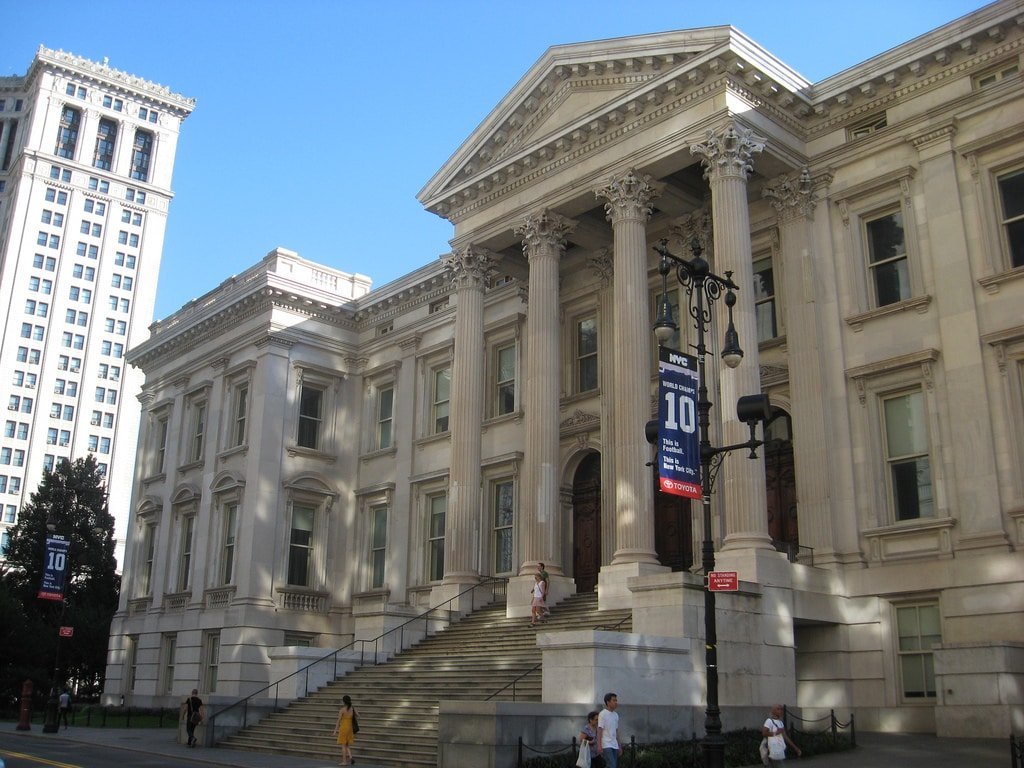 source: flickr
source: flickr
52 Chambers St
The three-storey building of the old court, new York County, known as the «Widow court» built in the American Victorian style with funds obtained by William Tweed. The construction of the building was carried out in the years 1861-1872. In total, its construction cost the taxpayers in 12-13 million dollars, nearly twice more than the purchase of Alaska in 1867 (then 7.2 million dollars). Now the building is on the national register of historic places.
10/The Store Of A. T. Stewart Company
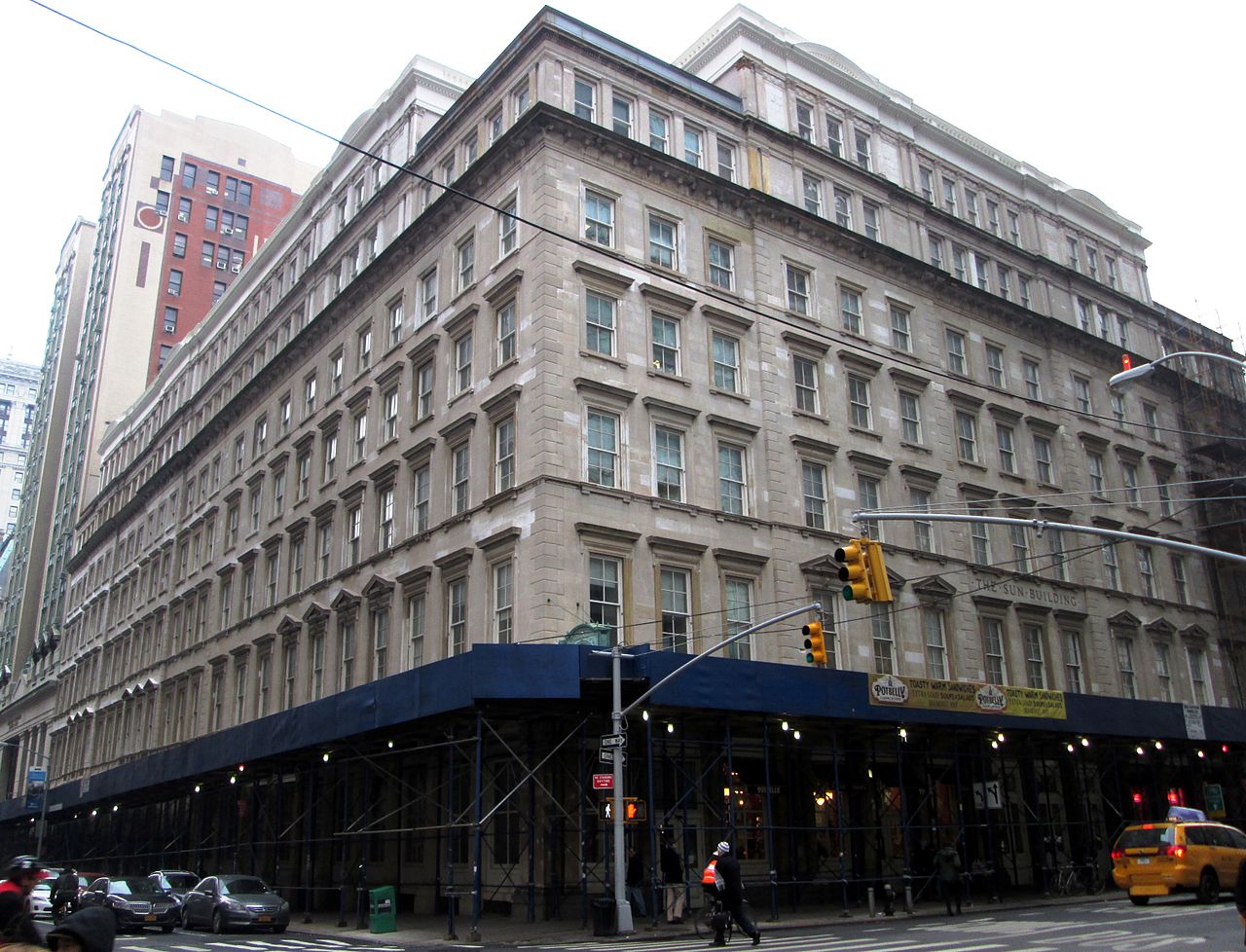
280 Broadway
Marble Palace Stewart Company, a large shopping Mallwhere you can buy the best of shawls and fabrics such as satin, silk, brocade, etc., still stands on the northeast corner of Broadway and chambers street. However, now there are mostly government offices.
To be continued.